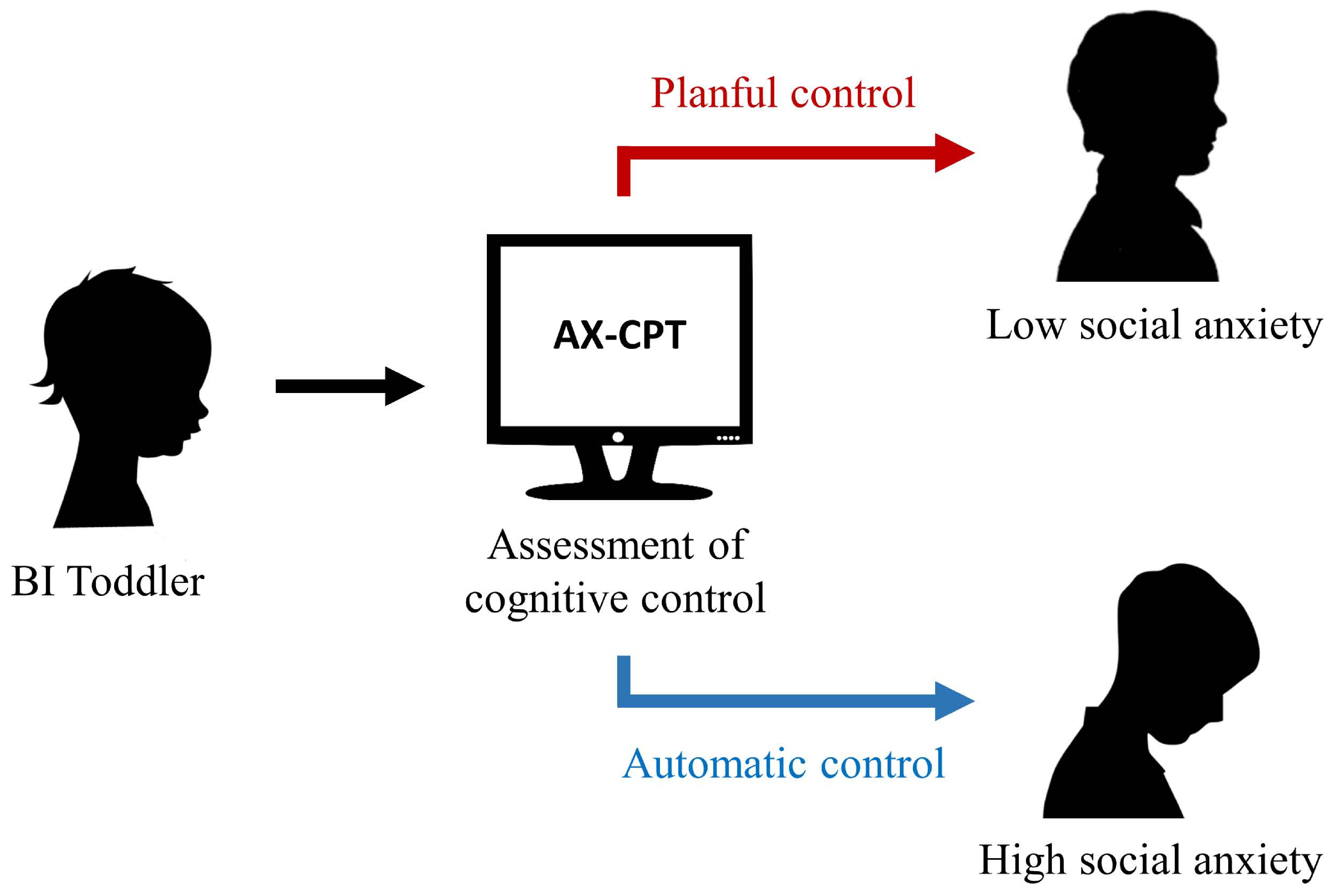Figure 2.

An illustration of the proposed developmental cascade from Behavioral Inhibition in toddlerhood to social behavior in later childhood. Children exhibiting BI in toddlerhood complete an assessment of cognitive control (e.g., AX-CPT) later in childhood. The AX-CPT enables measurement of both automatic and planful control processes through its use of contextual cues (e.g., the letters “A” or “B”) that help signal to the participant how they should respond to an upcoming probe (e.g., the letters “X” or “Y”). Because participants are instructed to only respond when they see an “A” that is followed by an “X,” participants must use a combination of planful control (i.e., upon seeing the cue, anticipating a possible response to the upcoming probe) and automatic control (i.e., upon seeing the probe, choosing the appropriate response given the cue that was seen earlier) in order to maximize task accuracy. Children ending toward planful control are predicted to exhibit lower levels of social anxiety, while those tending toward automatic control are predicted to exhibit higher levels of social anxiety.
